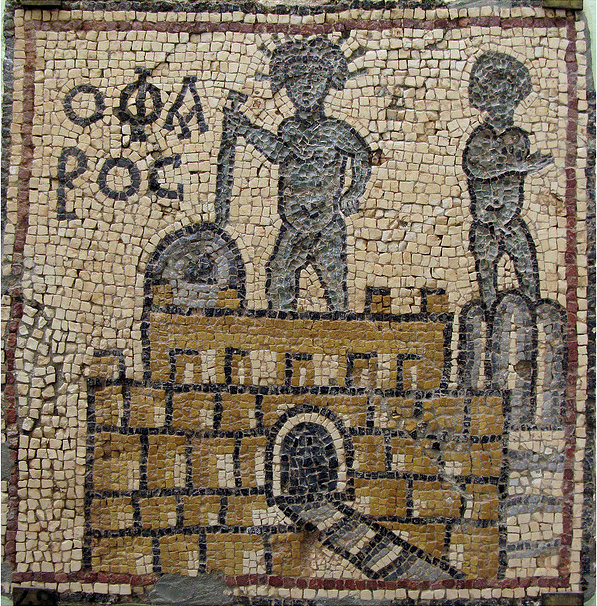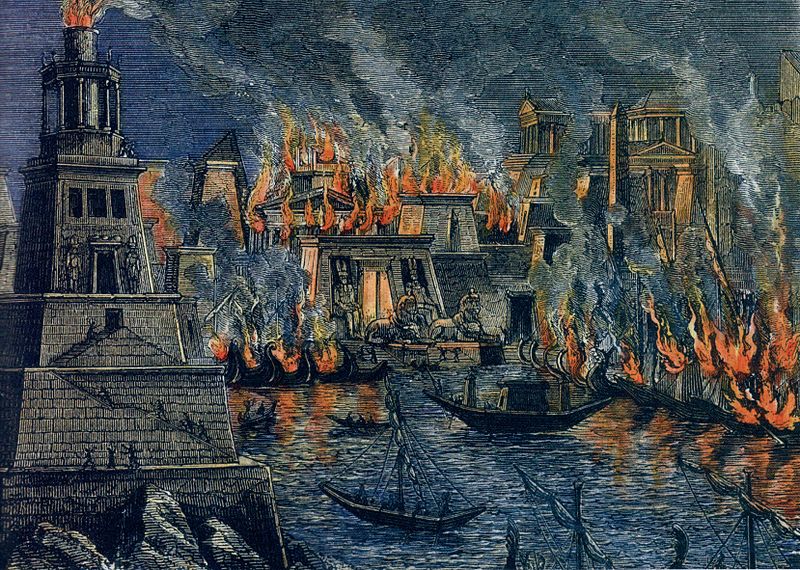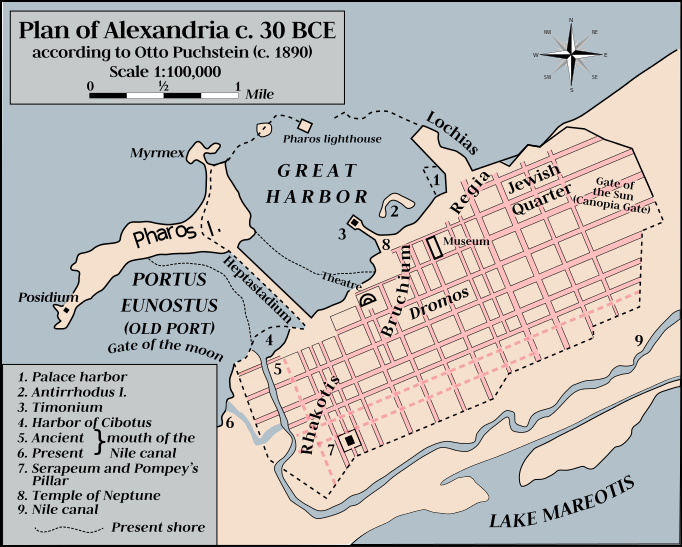Who’s with me? Cultural Identity and the Alexandrian riots of 38 CE
Disputes about cultural identity can be traced throughout history. In the first century C.E., Alexandria was one of the most diverse, multicultural cities of the Roman Empire. In 38 CE large-scale riots broke out between Greek and Jewish Alexandrians.
If this past year’s cycle of elections and referenda has taught us anything, it is that the question of national identity will more than likely remain on the political agenda for the foreseeable future. Most recently, the question ‘who belongs’ became a central topic in the Dutch national elections. Christian democrat (CDA) leader Sybrand Buma raised eyebrows by suggesting that children should be taught to sing the national anthem in school, and that they should stand up while doing so. The new party Forum for Democracy even argued for a law that would demand adherence to specific “Dutch values”, while also claiming that the population of the Netherlands is being “homeopathically diluted”.[1]

Image 1: Headline from Elsevier magazine discussing the issue of traditional Dutch holidays: “Will celebrating Easter be the next act of resistance?” (source).
While this movement has been referred to as “new nationalism”, disputes about cultural identity can be traced throughout history – even into classical antiquity. In the first century C.E., Alexandria was one of the most diverse, multicultural cities of the Roman Empire. Its population included not only Romans and Egyptians, but also a significant Jewish community, as well as Greek inhabitants, who traced their ancestry to the Macedonian soldiers who had travelled to the region with Alexander the Great.

Image 2: Mosaic of the lighthouse of Alexandria, currently in the Qasr Libya Museum (wikimedia commons)
However, the city’s status as a cultural hub was not without its problems. In 38 CE large-scale riots broke out between Greek and Jewish Alexandrians, and while the exact causes of these disturbances remain the subject of extensive debate to this day,[2] it is nonetheless possible to trace the course of events by studying the writings of the contemporary author Philo of Alexandria, who was a member of the Jewish community and experienced the riots in person.[3] From Philo’s writings, we get the impression that the riots were the result of deeply rooted dissatisfaction, which had been building up for years before finally erupting into the open during the early years of Caligula’s reign.

Image 3: The Fire of Alexandria, by Hermann Göll (wikimedia commons)
Throughout Philo’s account of the riots, we get the distinct impression that the general discontent was caused by a complex mixture of religious and political issues. This became especially evident when Agrippa I, the Jewish king of Judea and a staunch Roman ally, visited the city. Since Alexandria had lost both its status as a royal residence and its senate after the Roman conquest, Greek Alexandrians seem to have found the fact that the Jewish community continued to have a monarch of their own completely intolerable. They mocked the visiting king at every turn, and publically insulted him by crowning a mentally disabled man and addressing him with the Syrian word for king. Matters soon escalated, and after the synagogues of the city had been desecrated or destroyed, Jewish inhabitants were rounded up into a single district of the city and exposed to violence. Meanwhile, the Roman prefect Flaccus chose the side of the Greek rioters, and formally declared the Jews aliens and foreigners.

Image 4: Map of Roman Alexandria (wikimedia commons)
This declaration by the Roman governor provides an additional clue for the cause of the Greeks’ animosity. It was a clear sign that the Greek inhabitants of Alexandria saw the Jewish community as a fundamentally alien element within their city, and wished to see this view recognized. In reality, however, matters were not at all so clear-cut. Not only did the Jewish community have a formally recognized governing body, or politeuma, with all connected privileges, while the Greeks had been deprived of their senate, but it was also fundamentally unclear who could lay claim to the coveted status of Alexandrian citizen. Being a citizen meant exemption from Roman taxation, but, more importantly, it also meant status and political influence, and it is likely that some, though certainly not all, Alexandrian Jews sought to become members of this elite community. A number even claimed that they had an ancient right to citizenship, going back to the foundation of the city. For members of the Greek elite, this simply could not stand: to have Alexandrian citizenship meant to be a ‘true’ Alexandrian, and that, they thought, the Jews were not. As the anti-Jewish polemicist Apion argued: how could they be Alexandrians if they did not worship the Alexandrian gods?
In many ways, the Alexandrian riots were a perfect storm of animosity and jealousy. While the Jewish community attempted to establish itself as a part of Alexandrian society, Greek Alexandrians attempted to maintain the rights they thought were threatened by ‘intruders’ who did not belong, but were given special privileges nonetheless. Matters were only tentatively resolved when emperor Claudius intervened in 41 CE and re-established the boundaries between the feuding factions. However, this would not be the end for many other Jewish communities throughout the Roman Empire: similar questions of cultural identity would continue to play a part in a significant number of cities, showing just how deep, and how destructive, these issues can be. Despite the fact that many modern-day politicians are fond of referencing classical antiquity as a crucial part of ‘our’ heritage and identity, this seems to be a lesson many of them have yet to learn.
[1] Both issues were discussed during the Pauw&Jinek episode of 10 March 2017. The complete broadcast with Dutch subtitles is available via <this link <http://www.uitzendinggemist.ne...;.
[2] See, among many others, John M.G. Barclay, Jews in the Mediterranean Diaspora (Edinburgh: T&T Clark, 1996); Sandra Gambetti, The Alexandrian Riots of 38 C.E. and the Persecution of the Jews: A Historical Reconstruction (Leiden: Brill, 2009) and Mary E. Smallwood, The Jews under Roman Rule: from Pompey to Diocletian (Leiden: Brill, 1976).
[3] Philo describes the riots in two of his works. These two, namely the Embassy to Gaius and Against Flaccus may be found <here <http://www.earlyjewishwritings...;.
© Renske Janssen and Leiden Arts in Society Blog, 2016. Unauthorised use and/or duplication of this material without express and written permission from this site’s author and/or owner is strictly prohibited. Excerpts and links may be used, provided that full and clear credit is given to Renske Janssen and Leiden Arts in Society Blog with appropriate and specific direction to the original content.



0 Comments